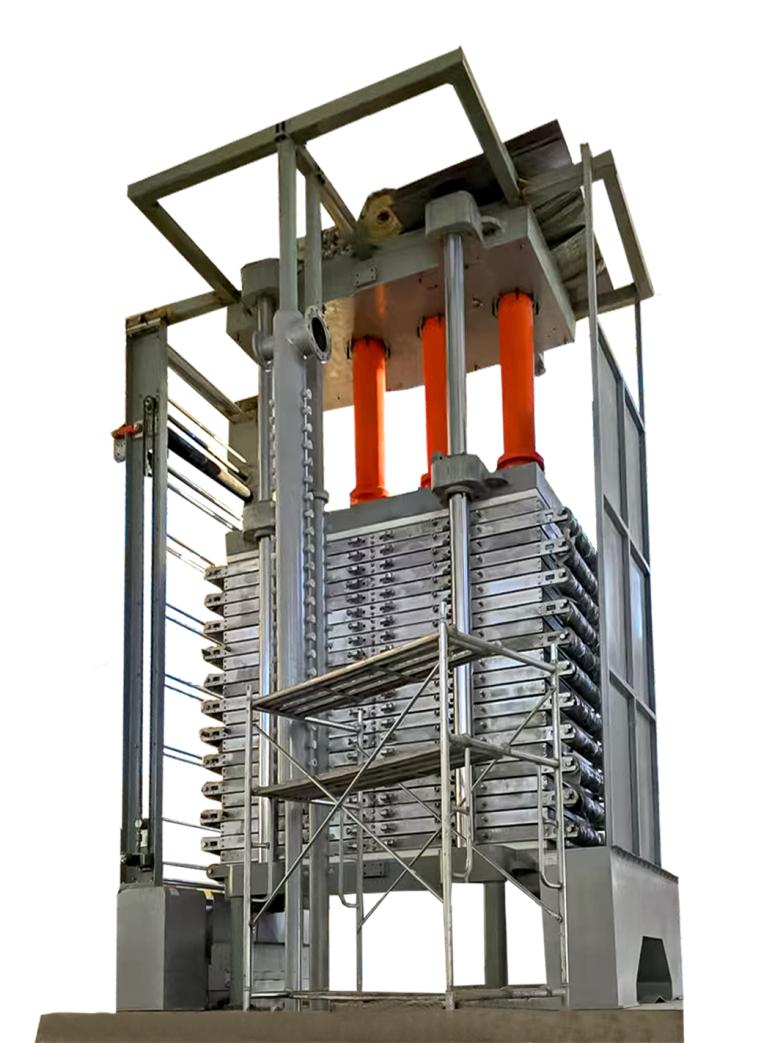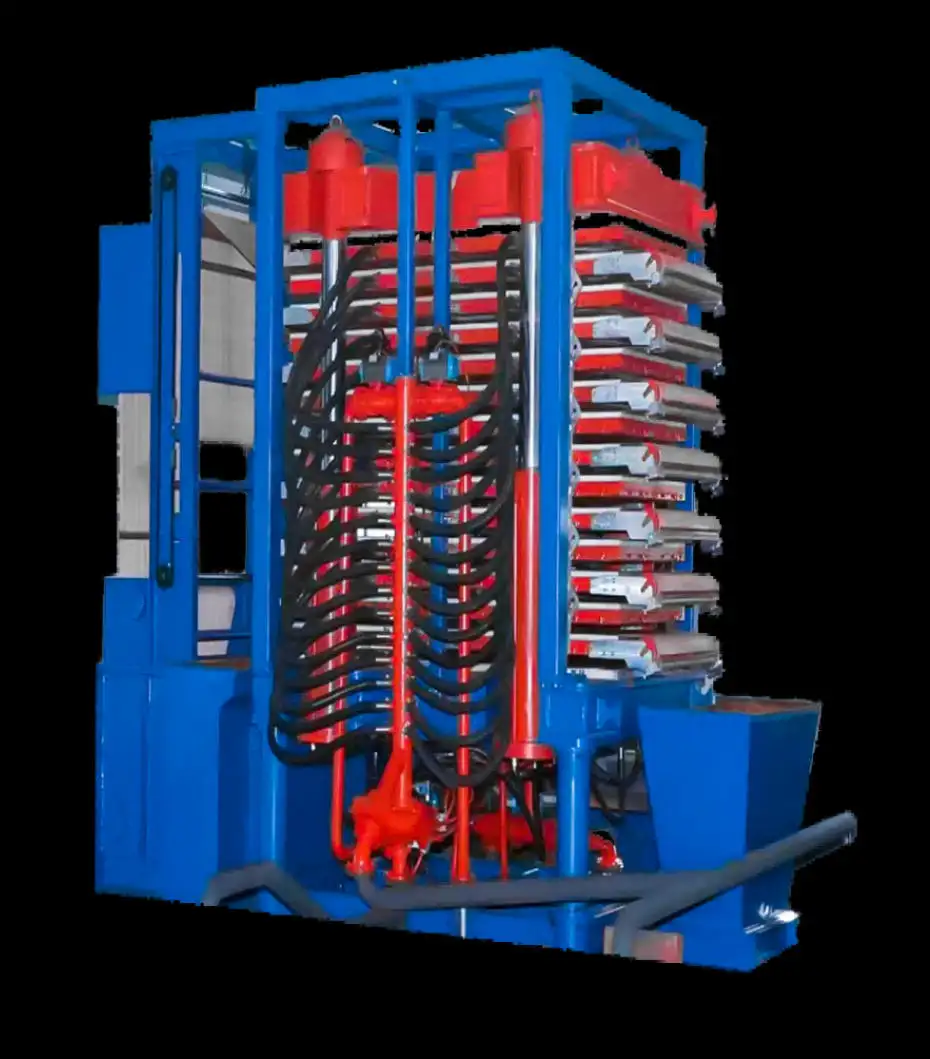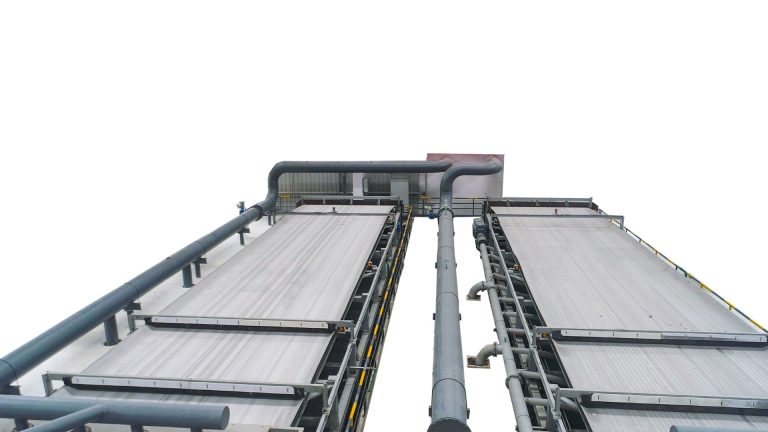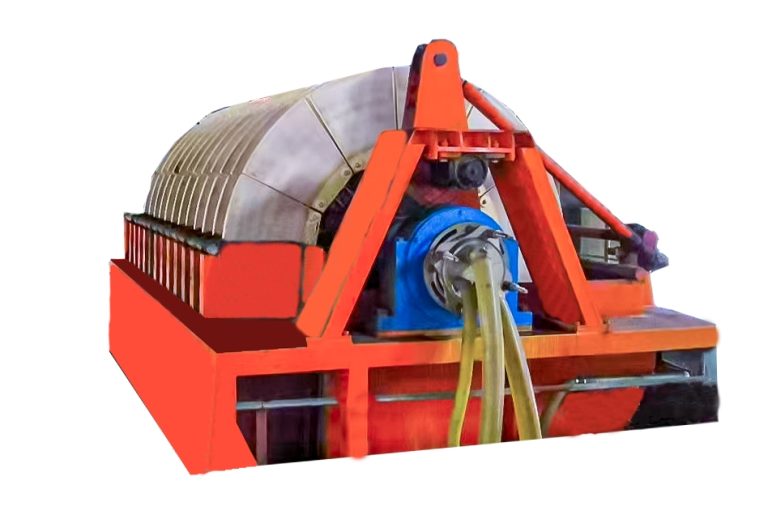
Фильтры башни TFP приходят от Yantai Hexin Environmental Protection Equipment Co., Ltd. Эти современные системы работают автоматически. Они очень хорошо отделяют твердые вещества от жидкостей. Эти устройства славятся своим сильным фильтрационным давлением. Это давление может достигать 20 МПа. Они также используют мало энергии. Кроме того, они могут хорошо обрабатывать липкие или очень тонкие вещества. Многие отрасли используют их. К ним относятся горнодобывающая промышленность, металлообработка, химическое производство и охрана природы. Однако даже умное оборудование, такое как TFP Tower Filters, может иметь проблемы. В этом блоге рассматриваются частые проблемы с этими фильтрами. Это объясняет, почему они происходят. Он также дает практические ответы. Эти шаги помогают вашему фильтру работать лучше всего. Если вы управляете заводом, ремонтируете машины или управляете оборудованием, это руководство для вас. Это поможет вам найти и решить проблемы. Вы также узнаете, как хорошо ухаживать за вашим башенным фильтром TFP.
Понимание башенных фильтров TFP
Вертикальный фильтрный пресс TFP работает вертикально, как башня. Он имеет плоские фильтрационные пластины, лежащие в сторону. Многие цилиндры движутся вместе. Гидравлические цилиндры направляются самостоятельно. Его автоматические шаги включают в себя фильтрацию, прессование, стирку, сушку, избавление от отходов и очистку фильтровой ткани. Это делает его ключом к извлечению воды из вещей. Примерами являются остатки шахты, грязная грязь из канализации и химические отходы. Но проблемы могут нарушить работу. К ним относятся неравномерная фильтрация, остановки машины или слишком большая влажность в торте отходов. Ниже мы рассмотрим наиболее заметные проблемы и как их решить.
Частые проблемы и их причины
Чтобы устранить частые проблемы с TFP Tower Filters, вы должны найти реальные причины. Эти проблемы часто начинаются от неправильного использования, пропущенного ухода или вещей, которые вызывают проблемы. Вот основные проблемы, с которыми сталкиваются люди:
1. Неравномерные результаты фильтрации
Знаки:
Отходы торта образуются странно, твердые и жидкости не’ t полностью разделен, или фильтрованная жидкость выглядит по-разному каждый раз.
Причины:
- Блокированная фильтрная ткань:Маленькие куски или липкое вещество могут подключить фильтрную ткань. Это снижает скорость фильтрации.
- Неправильные уровни давления:Плохое давление фильтрации (ниже или выше лучшего 20 МПа) приводит к плохому расщеплению.
- Изменение смеси шламы:Различия в толщине шламы или размере бита влияют на стабильность фильтрации.
2. Слишком много влаги в торте отходов
Знаки:
Отходы торта сохраняют дополнительную воду. Он не достигает необходимого уровня сухости.
Причины:
- Недостаточно времени для нажатия:Слишком мало времени для первого или второго шага пресса.
- Плохая сушка воздуха:Сломанная передача сжатого воздуха или недостаточное время сушки.
- Проблемы диафрагмы:Ношенные или поврежденные диафрагмы сокращают скорость прессования.
3. Отходы торт выиграл’ t Выйдите
Знаки:
Отходы тортов не’ t упасть вправо или прилепиться к фильтровой ткани.
Причины:
- Ношенная ткань фильтра:Старая или поврежденная фильтровая ткань останавливает торт от отпуска.
- Проблемы передачи:Сломанный фильтр ткани двигатель или гидравлическая установка.
- Лепкие вещества:Очень клейкое вещество делает избавление от отходов трудным.
4. Неисправности гидравлической системы
Знаки:
Медленное или прыгающее движение цилиндра, гидравлические капли или тревога системы.
Причины:
- Низкая гидравлическая жидкость:Недостаточное количество жидкости снижает давление или замедляет работу.
- Грязная жидкость:Грит или вода в гидравлической жидкости наносят вред скорости.
- Часть носить:Ношенные уплотнения или цилиндры вызывают капли или колебание работы.
5. Проблемы с автоматизацией и управлением
Знаки:
Ошибки ПЛК или экрана, колебанная автоматизация или внезапные остановки.
Причины:
- Электрические неисправности:Свободные соединения или плохие проводы в настройке управления.
- Проблемы с программным обеспечением:Старый код мозга ПЛК или ошибки настройки.
- Проблемы с датчиком:Сломанные датчики нарушают автоматические шаги.
Решения общих проблем
Устранение этих проблем быстро сокращает остановки и поддерживает хорошую работу TFP Tower Filter. Ниже приведены полные ответы на каждую проблему.
Исправление неравномерных результатов фильтрации
Уход за фильтровой тканью Часто:
- Посмотрите и очистите фильтрную ткань после каждого пробега, чтобы извлечь застряглые куски.
- Измените ткань, если остаются знаки разъема или износа. Убедитесь, что он соответствует вашему типу TFP (например, TFP-1 до TFP-144).
- Используйте автоматическую деталь для очистки ткани фильтра, чтобы поддерживать скорость.
Установите давление вправо:
- Регулируйте давление фильтрации до предлагаемого 20 МПа. Изменить его на основе свойств шламы.
- Следите за скоростью насоса, чтобы убедиться, что давление остается равномерным.
Изменить подачу шламы:
- Проводите регулярные проверки шламы, чтобы сохранить толщину и размер бита стабильными.
- Сначала обработайте шламы с помощью уплотнителей (таких как NGZ High Efficiency Thickener), чтобы стабилизировать кормовую смесь.
Высокая влажность в торте отходов
Удлить этапы прессования и сушения:
- Сделайте первый и второй шаги пресса дольше, чтобы вытащить больше жидкости.
- Убедитесь, что стадия сушки воздуха достаточно длинная. Как правило, сжатый воздух должен подтолкнуть влажность до желаемого уровня.
Проверьте состояние диафрагмы:
- Часто смотрите на диафрагмы на износ или повреждения. Меняйте их, когда это необходимо.
- Проверьте, что вода высокого давления попадает в диафрагму без блоков.
Сделайте настройку сушилки воздуха лучше:
- Посмотрите на трубу распределения сжатого воздуха на пробки или капли.
- Убедитесь, что давление воздуха достаточно сильное, чтобы хорошо оттолкнуть влажность из торта отходов.
Сделать торт отходов лучше
Уход за фильтровой тканью:
- Быстро смените ношенные фильтровые ткани, чтобы помочь торту легко упасть.
- Используйте ткани, сделанные для клейких вещей, если это необходимо.
Проверьте детали передач:
- Посмотрите на фильтр ткани двигатель для правильной работы. Масло движущиеся части.
- Проверьте скорость гидравлического цилиндра, чтобы убедиться, что пластины движутся плавно.
Изменить вещи Управление:
- Для липких веществ попробуйте сначала обработать шламу, чтобы снизить липкость.
- Измените трату времени, чтобы торт полностью снял.
Решение неисправностей гидравлической системы
Держите гидравлическую жидкость хорошей:
- Часто проверяйте уровень жидкости. Добавить больше с maker’ с предложил гидравлическую жидкость.
- Заменяйте грязную жидкость и очистите настройку, чтобы остановить накопление зерна.
Посмотрите на части:
- Проверьте уплотнения, трубы и цилиндры часто на износ или капли.
- Изменить изношенные части во время планируемого ухода, чтобы остановить неожиданные неудачи.
Планированный уход:
- Следуйте за Yantai Hexin’ с предложил план ухода, чтобы держать гидравлическую установку надежной.
- Используйте только высококачественные детали для обмена.
Решение проблем с автоматизацией и управлением
Проверьте электрическую настройку:
- Посмотрите на проводы и соединения на свободу или ржавчину.
- Убедитесь, что мощность достигает ПЛК и экрана стабильно.
Изменения в программном обеспечении:
- Часто меняйте код мозга PLC, чтобы остановить ошибки, связанные с программным обеспечением.
- Спросите Yantai Hexin’ s техническая помощь для изменений настройки.
Настройка датчика:
- Испытайте и настройте датчики для правильного обнаружения точек процесса.
- Быстро замените сломанные датчики, чтобы сохранить стабильность автоматизации.
Советы по профилактической помощи
Остановление распространенных проблем с TFP Tower Filters требует ранней помощи. Вот ключевые советы, чтобы ваш фильтр-пресс работал хорошо:
| Задача ухода | Как часто | Подробности |
| Проверка ткани фильтра | Ежедневно | Ищите пробки, разрывы или износ; чистить или обмениваться. |
| Гидравлическая настройка Look | Еженедельная | Проверьте уровень жидкости, уплотнения, трубы; добавить или заменить жидкость. |
| Проверка диафрагмы | Ежемесячно | Посмотрите, является ли диафрагма полной; Обмен, если поврежден. |
| PLC и сенсорная настройка | Ежеквартально | Настройте датчики и измените код мозга PLC. |
| Полная проверка настройки | Ежегодно | Сделайте полный взгляд с Yantai Hexin’ с помощью. |
- Поездные операторы:Убедитесь, что пользователи изучают использование и фиксацию TFP Tower Filter. Используйте Yantai Hexin’ бесплатное обучение на месте во время установки.
- Держите дополнительные части:Готовы ключевые дополнительные детали (например, фильтровые ткани, уплотнения). Это сокращает время остановки.
- Смотреть точки скорости:Отслеживайте давление фильтрации, влажность торта и время цикла. Это помогает выявить возможные проблемы рано.
О Yantai Hexin: Ваш надежный поставщик фильтра башни TFP

Янтай Хексин Экологическая защита оборудования Ко., ООО находится в YEDA, городе Янтай, провинции Шаньдун. На протяжении более 20 лет она ведет производство фильтрационных устройств. Он фокусируется на TFP башневых фильтрах, Пояс фильтры, керамические фильтры, и высокоскоростные затушители. Компания дает сильные, стабильные ответы для таких отраслей, как горнодобывающая промышленность, металлообработка и уход за природой. Верит в “ Живут качеством, растут доверием. ” Yantai Hexin предлагает экспертные исследования, современные шаги по производству и полные помощь после продажиЭто включает 24/7 техническую помощь и обучение на месте. Его ISO9001 проверка качества гарантирует, что каждый башенный фильтр TFP соответствует строгим правилам. Это делает их надежным партнером для потребностей в делении твердой жидкости по всему миру.
Вывод
Башневые фильтры TFP являются мощными вспомогательными средствами для деления твердой жидкости. Но устранение общих проблем с ними является ключом к сохранению их скорости и долгой жизни. Зная, почему возникают такие проблемы, как неравномерная фильтрация, высокая влажность или гидравлические неисправности, пользователи могут улучшить скорость и сократить остановки. Использование ответов выше очень помогает. Ранний уход, регулярный внешний вид и обучение пользователя останавливают эти проблемы. С Yantai Hexin’ с стабильной передачи и полной помощи, ваш TFP Tower Filter будет работать лучше всего в течение многих лет.
Вопросы и ответы
1. Каковы наиболее заметные проблемы с TFP Tower Filters?
Частые проблемы включают треперенную фильтрацию, высокую влажность в тортах отходов, отходы, которые выиграли ’ t выйти, неисправности гидравлической системы и ошибки автоматизации. Часто правильный уход и изменения исправляют их, как показано здесь.
2. Как я могу снизить высокую влажность в тортах отходов с фильтрами башни TFP?
Чтобы исправить это, сделайте этапы прессования и сушки воздухом дольше. Посмотрите и замените изношенные диафрагмы. Убедитесь, что настройка сжатого воздуха работает правильно. Регулярный уход за фильтровой тканью также помогает достичь необходимого уровня сухости.
3. Почему выиграл’ t мой TFP башний фильтр позволить отходы торт снять?
Проблемы с отходами часто возникают из изношенных фильтровых тканей, липких веществ или проблем с передачей с двигателем фильтровой ткани. Смена ткани, сначала обработка липких шламов и проверка деталей передач могут решить эти проблемы.
4. Как часто я должен заботиться о моем фильтре башни TFP, чтобы остановить общие проблемы?
Ежедневный фильтр ткани выглядит, еженедельные гидравлические проверки настройки, ежемесячные диафрагмы выглядит, и квартальные PLC мелодии мудры. Полная проверка настройки должна проводиться каждый год на максимальную скорость.
5. Где я могу получить помощь для устранения проблем фильтра башни TFP?
Yantai Hexin предоставляет 24/7 онлайн техническую помощь и помощь на месте для TFP Tower Filters. Достигните их в https://www.hexinfiltermachine.com/technical-support/ для экспертных консультаций.









